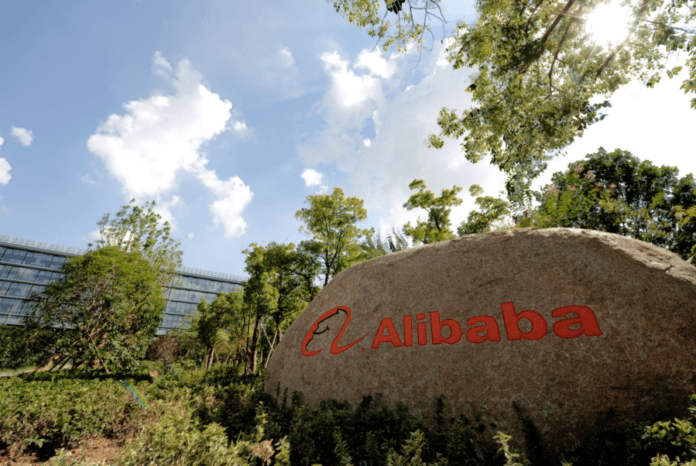Our news roundup today looks at the latest news, trends and developments in e-commerce payments. In India, Paytm, with new SoftBank investment, launched a new full-service bank. E-commerce companies in India aren’t happy but they will soon be forced to collect 1% GST at point of sale. With 10 million transactions processed daily, State Bank of India has launched a renewed e-commerce payments platform.
 PracticalEcommerce.com has a useful guide for e-commerce businesses on navigating the complexities of international payments. Alibaba’s new MOU with the Trade Development Authority of Pakistan is aimed at helping the company grow its Middle East business. With a population of 165 million, Bangladesh already has more than 7,200 e-commerce businesses selling online with 20% annual growth.
PracticalEcommerce.com has a useful guide for e-commerce businesses on navigating the complexities of international payments. Alibaba’s new MOU with the Trade Development Authority of Pakistan is aimed at helping the company grow its Middle East business. With a population of 165 million, Bangladesh already has more than 7,200 e-commerce businesses selling online with 20% annual growth.
Lazada Malaysia is looking to grow e-commerce in the Sarawak region with new warehousing facilities and helping local retailers learn about selling online. MultichannelMerchant.com offered five omnichannel strategies to help US businesses expand into China’s $917 billion cross-border e-commerce market.
 Amazon launched its Amazon Prime TV subscription service in Germany and the UK as part of an expansion drive in the EU. For many luxury fashion brands and products, Amazon is no longer the second-tier market choice for companies looking for online sales growth. A new global e-commerce solution, dubbed First Data Global PFAC, was launched for global payment facilitators.
Amazon launched its Amazon Prime TV subscription service in Germany and the UK as part of an expansion drive in the EU. For many luxury fashion brands and products, Amazon is no longer the second-tier market choice for companies looking for online sales growth. A new global e-commerce solution, dubbed First Data Global PFAC, was launched for global payment facilitators.
Paytm Payments Bank Limited to Launch Next Week
 Paytm is launching a bank. The news was published in advance of the announcement that SoftBank had invested $1.6 billion into Paytm’s parent company One97 Communications Limited. The SoftBank investment may have been incentivized due to the fact the Reserve Bank of India had approved the license for Paytm Payments Bank Limited to launch in the days prior to the investment.
Paytm is launching a bank. The news was published in advance of the announcement that SoftBank had invested $1.6 billion into Paytm’s parent company One97 Communications Limited. The SoftBank investment may have been incentivized due to the fact the Reserve Bank of India had approved the license for Paytm Payments Bank Limited to launch in the days prior to the investment.
In a blog post, Paytm explained the mission of the bank:
“The core mission of Paytm Payments Bank will be to cater to the requirements of the un-served and under-served communities of India, and bring them to the mainstream economy. We are looking forward to making Paytm Payments Bank available to all our users very soon.”
The official launch date for the bank is May 23, 2017. Via crowdfundinsider.com
GST: Online Sellers Welcome 1% Tax Collected At Source, E-Commerce Firms Fret
 India’s e-commerce firms lost the GST battle after months of discussions with the government and representation through sectoral bodies.
India’s e-commerce firms lost the GST battle after months of discussions with the government and representation through sectoral bodies.
The GST Council on Friday decided to levy an up to 1 percent tax collected at source on e-commerce companies while making payments to suppliers. Once the new indirect tax regime kicks in, e-commerce marketplaces will deduct a portion of the amount payable to suppliers and remit it to the government.
And while e-tailers are disappointed, online sellers have welcomed the move, saying it will check tax evasion and bring transparency in this otherwise unorganised sector.
In an earlier interview with BloombergQuint, Amit Agarwal, vice president and country manager at Amazon India had said that tax collected at source, if levied, can put up to 1.8 lakh jobs in the industry at risk, and small and medium retailers using the marketplace will be the worst affected. Via bloombergquint.com
State Bank of India revamps e-commerce payments gateway
 State Bank of India (SBI) has deployed the “largest payment gateway for cards’ e-commerce transactions”, according to Shiv Kumar Bhasin, CTO of the SBI group.
State Bank of India (SBI) has deployed the “largest payment gateway for cards’ e-commerce transactions”, according to Shiv Kumar Bhasin, CTO of the SBI group.
It processes ten million transactions per day, with 2,000 transactions per second (TPS) of peak load processing capabilities. This “beats the business volumes processing capabilities of a lot of leading international card scheme providers’ payment gateways,” Bhasin says in a LinkedIn post.
Furthermore, “it is the only payment gateway of a bank [owned by a public sector bank] in the Indian financial services industry which is PCI-DSS compliant,” he states. He describes the project as a “transformation milestone” for SBI in “processing and promoting digital payments/transactions of digital citizens of digital India”. Via bankingtech.com
Navigating International Payment Methods, for E-commerce
 Many e-commerce retailers desire to expand internationally. Understanding the preferred payment methods in other countries is a key component. In this post, I’ll explore some of the issues involved with accepting credit card and digital payments from international consumers.
Many e-commerce retailers desire to expand internationally. Understanding the preferred payment methods in other countries is a key component. In this post, I’ll explore some of the issues involved with accepting credit card and digital payments from international consumers.
Cross-border Fees
The major card brands — Visa, MasterCard, Discover, American Express — charge cross-border fees that trickle down to merchants. Those fees are determined by two criteria: Location of merchant and location of card-issuing institution.
Most online payment processing fees are governed by the credit card interchange, which are rates set by the major card brands. A merchant’s account provider pays the interchange rates and then assesses fees to the merchant to cover those rates, plus profit. Interchange rates vary by region and geographic location. The U.S. has two cross-border fees. Via practicalecommerce.com
Alibaba looks to grow e-commerce in Pakistan
 Alibaba has signed of a memorandum of understanding (MoU) with the Trade Development Authority of Pakistan (TDAP) to grow the e-commerce sector in Pakistan, which could give the country’s airfreight sector a boost. Executive chairman, Jack Ma and Pakistan PM Nawaz Sharif penned the MOU during PM Sharif’s visit to the Alibaba Headquarters in Hangzhou, China this week.
Alibaba has signed of a memorandum of understanding (MoU) with the Trade Development Authority of Pakistan (TDAP) to grow the e-commerce sector in Pakistan, which could give the country’s airfreight sector a boost. Executive chairman, Jack Ma and Pakistan PM Nawaz Sharif penned the MOU during PM Sharif’s visit to the Alibaba Headquarters in Hangzhou, China this week.
Under the terms of the MoU, Alibaba, Ant Financial, and TDAP agree to foster growth of worldwide exports of products by small and medium-sized enterprises (SMEs) in Pakistan through e-commerce.
Online and offline training programs for the SMEs will also be conducted by Alibaba in a bid to assist SMEs with on-boarding on to Alibaba’s platforms and optimising exports through e-commerce. Via aircargoweek.com
A look into e-commerce trends and companies in Bangladesh
 E-commerce is one of the biggest markets in Bangladesh. According to e-cab, there are more than 7,000 e-commerce websites that sell their products on their website or Facebook page.
E-commerce is one of the biggest markets in Bangladesh. According to e-cab, there are more than 7,000 e-commerce websites that sell their products on their website or Facebook page.
Facts about Bangladesh e-commerce market
The current population of Bangladesh is about 165 million, and it is 2.19 per cent of the total population of the world. Also, Bangladesh is eighth in the list of highest-population counties. Around 14.5 per cent of the population uses the internet. According to Prothom-Alo, about 2 million users shop online every year and growth rate is 20 per cent. Dhaka reportedly ranks among most active Facebook users, and the social network’s penetration rate is at 12.7 per cent. According to the report, 22 million users in Dhaka are on social media. This means Bangladesh is a good market for any type of business wanting to sell online.
There are a number of e-commerce and online shopping companies in Bangladesh, including Daraz, AjkerDeal, Bagdoom, Bikroy.com, Ekhanei and amikinee.com. Many companies have been developed to provide support services to e-commerce companies, such as e-Courier, Pathao, and GoFetch. Recently Amazon and Alibaba were reportedly planning to create their network in Bangladesh. Via e27.co
Lazada aims to boost S’wak’s e-commerce
 Lazada Malaysia hopes to bring more Sarawakian companies on its online e-commerce platform by initiating more efforts to overcome the e-commerce obstacles here. These efforts include reducing the logistics problem by providing a warehouse here in Kuching as well as introducing an over-the-counter payment method for purchases from Lazada.
Lazada Malaysia hopes to bring more Sarawakian companies on its online e-commerce platform by initiating more efforts to overcome the e-commerce obstacles here. These efforts include reducing the logistics problem by providing a warehouse here in Kuching as well as introducing an over-the-counter payment method for purchases from Lazada.
Lazada Malaysia’s chief executive officer Hans-Peter Ressel, who was also a key speaker for the recently concluded International ICT Infrastructure and Digital Economy Conference 2017 (IDECS 2017), revealed that there is a lot of potential in Sarawak as there are numerous businesses here selling unique products that could attract purchases worldwide.
“There are a lot sellers here in Sarawak that sell local products but they are not able to expand their businesses because they do not have the knowledge or skills to market their products online. Via theborneopost.com
Omnichannel Essentials for E-commerce Success in China
 Another hot market for foreign expansion is China, with nearly 1.4 billion consumers who are tech-savvy, increasingly affluent and ravenous for American products. To delight Chinese shoppers, U.S. retailers can make it easy and convenient to shop anywhere and anytime. Retailers need a cross-border strategy supported by relevant omnichannel marketing to realize e-commerce success in China.
Another hot market for foreign expansion is China, with nearly 1.4 billion consumers who are tech-savvy, increasingly affluent and ravenous for American products. To delight Chinese shoppers, U.S. retailers can make it easy and convenient to shop anywhere and anytime. Retailers need a cross-border strategy supported by relevant omnichannel marketing to realize e-commerce success in China.
Why U.S. Retailers are Expanding to China
In 2016, China’s cross-border e-commerce market reached $917 billion US, according to iMedia. Mobile shopping accounted for 56% of China’s 2016 online sales. On Singles Day or 11/11 – the world’s biggest online shopping event, created by Alibaba in China and held on November 11 – mobile accounted for an astounding 82% of total sales; experts expect this figure to rise in 2017.
In rural China, online shopping is often consumers’ only option – especially for U.S. and foreign products. While China’s tier 1 cities, including Beijing and Shanghai, represent affluent markets, Tier 2 cities like Suzhou and Ningbo enjoy lower living costs, giving consumers more disposable income for overseas shopping.
U.S. retailers can reduce risk and costs by entering China through cross-border e-commerce and prioritizing five omnichannel essentials. Here are 5 tips to help you create e-commerce success in the massive, growing Chinese market. Via multichannelmerchant.com
Amazon expands Amazon Channels to UK, Germany, taking aim at pay-TV users
 The race to control the TV is on, and today comes some news out of Europe underscoring Amazon’s ambitions in that department. The e-commerce giant announced the launch of Amazon Channels in the UK and Germany — its two biggest markets in the region — which will see Amazon, for the first time, offer close to 50 live and on-demand streamed channels to the region as part of its Amazon Prime service.
The race to control the TV is on, and today comes some news out of Europe underscoring Amazon’s ambitions in that department. The e-commerce giant announced the launch of Amazon Channels in the UK and Germany — its two biggest markets in the region — which will see Amazon, for the first time, offer close to 50 live and on-demand streamed channels to the region as part of its Amazon Prime service.
This is not just the first time that Amazon will offer live TV in Europe, tapping into what remains the most popular format for TV viewing in the region, despite the insurgence of on-demand content via the internet. Notably, Amazon Channels will be the first time that many popular channels like Discovery will be available for people to pay for and watch without subscribing to a larger, more expensive bundle of channels through a pay-TV provider like Sky or BT.
In other words, this will let Amazon squarely target consumers who are tired of paying high monthly premiums and are considering “cord-cutting.” Prices for each channel on Amazon Channels will range from £1.49/month to £9.49/month, with many coming in at around £3.99-£4.99. Via techcrunch.com
The 4 New Rules of Luxury Fashion E-Commerce: Amazon & Beyond
 In the not-so-distant past, high-end beauty and fashion brands had little reason to invest in their online presences, much less sell their product on Amazon.com. The unknowns of e-commerce, coupled with the commonplace perception of selling on Amazon, were feared to cheapen the very appeal that brought them to renown. That was then.
In the not-so-distant past, high-end beauty and fashion brands had little reason to invest in their online presences, much less sell their product on Amazon.com. The unknowns of e-commerce, coupled with the commonplace perception of selling on Amazon, were feared to cheapen the very appeal that brought them to renown. That was then.
Amazon’s growing retail orbit has included fashion and beauty since 2006, one of the newer and ever-expanding segments of the online retailer’s selection. And in the last three years, Amazon has turned a keen eye and set of resources to invite their loyal customers to shop fashion on the marketplace. This was tackled in multiple ways — initially by hosting the first New York Fashion Week Men’s in 2015 — to build credibility within the industry. More recently, Amazon turned its attention to the wider public in a 2016 ad campaign, in which models hand-deliver lifestyle products to customers, signaling the beginning of a new era. One study projects that in 2021, Amazon’s share of all U.S. e-commerce revenue will swell to 50 percent.
Amazon’s growing share of the e-commerce pie, combined with the decline of brick-and-mortar, has positioned the company from being an optional retail channel to a necessary one for most product categories — and fashion is no exception. Because of this, more luxury brand holdouts may soon be making the leap to Amazon, a development few could have foreseen a few short years ago. For those brands considering an initial foray into the world’s largest online marketplace, or those otherwise looking to boost existing e-commerce efforts, here are four principles to follow. Via TotalRetail
First Data introduces new e-commerce solution for payment facilitators
 First Data has introduced a new global e-commerce solution, dubbed First Data Global PFAC, for payment facilitators.
First Data has introduced a new global e-commerce solution, dubbed First Data Global PFAC, for payment facilitators.
First Data, a provider of commerce-enabling technology and solutions, has introduced a new global e-commerce solution, dubbed First Data Global PFAC, for payment facilitators.
The new offering will provide payment facilitators with a single integration interface, enabling their merchants to easily authorize transactions in nearly 150 currencies globally and settle in 17 currencies. The Global PFAC solution is structured into two programmes: Single MID Program and Multi MID Program. Via banking-business-review.com








LET’S CONNECT